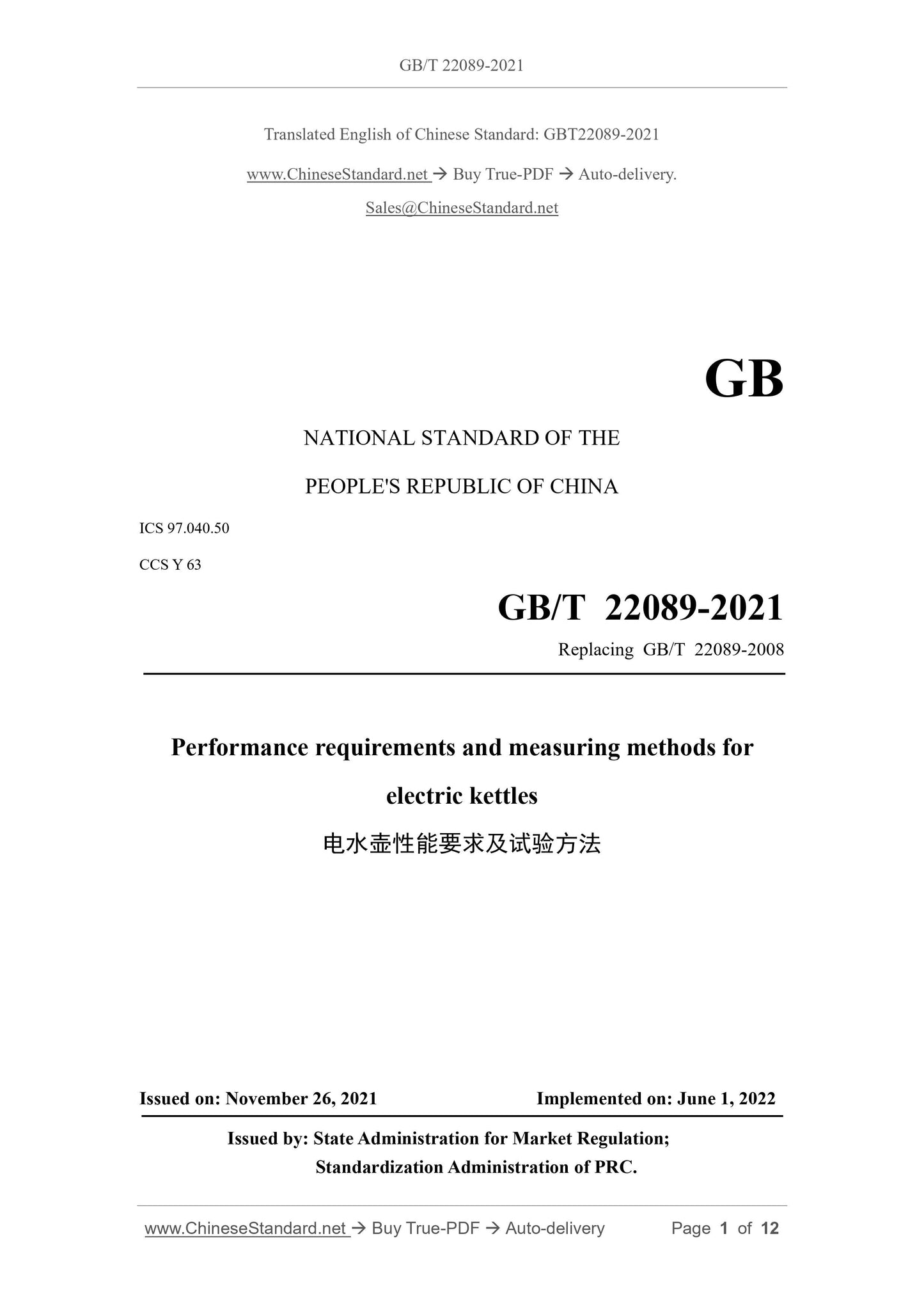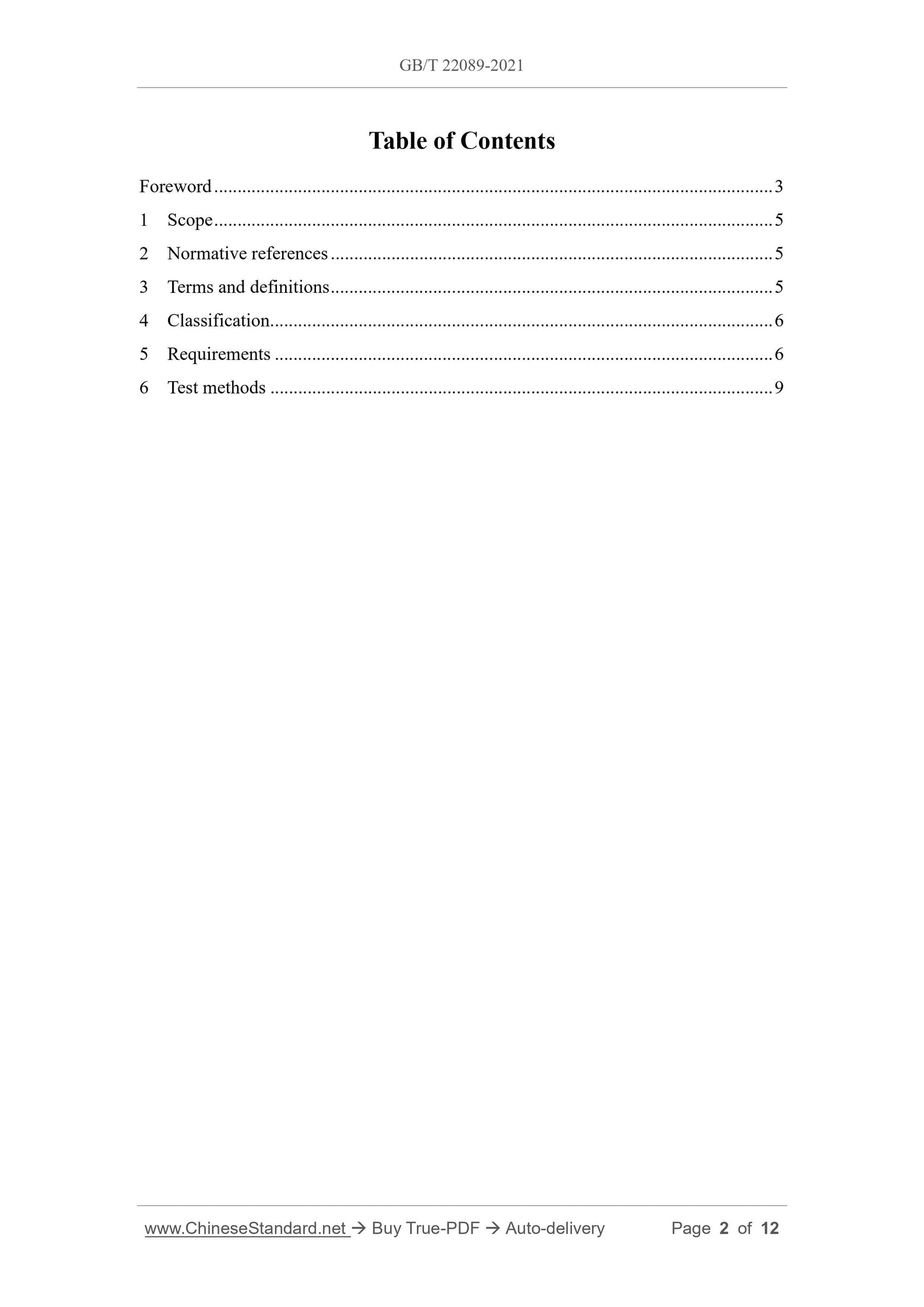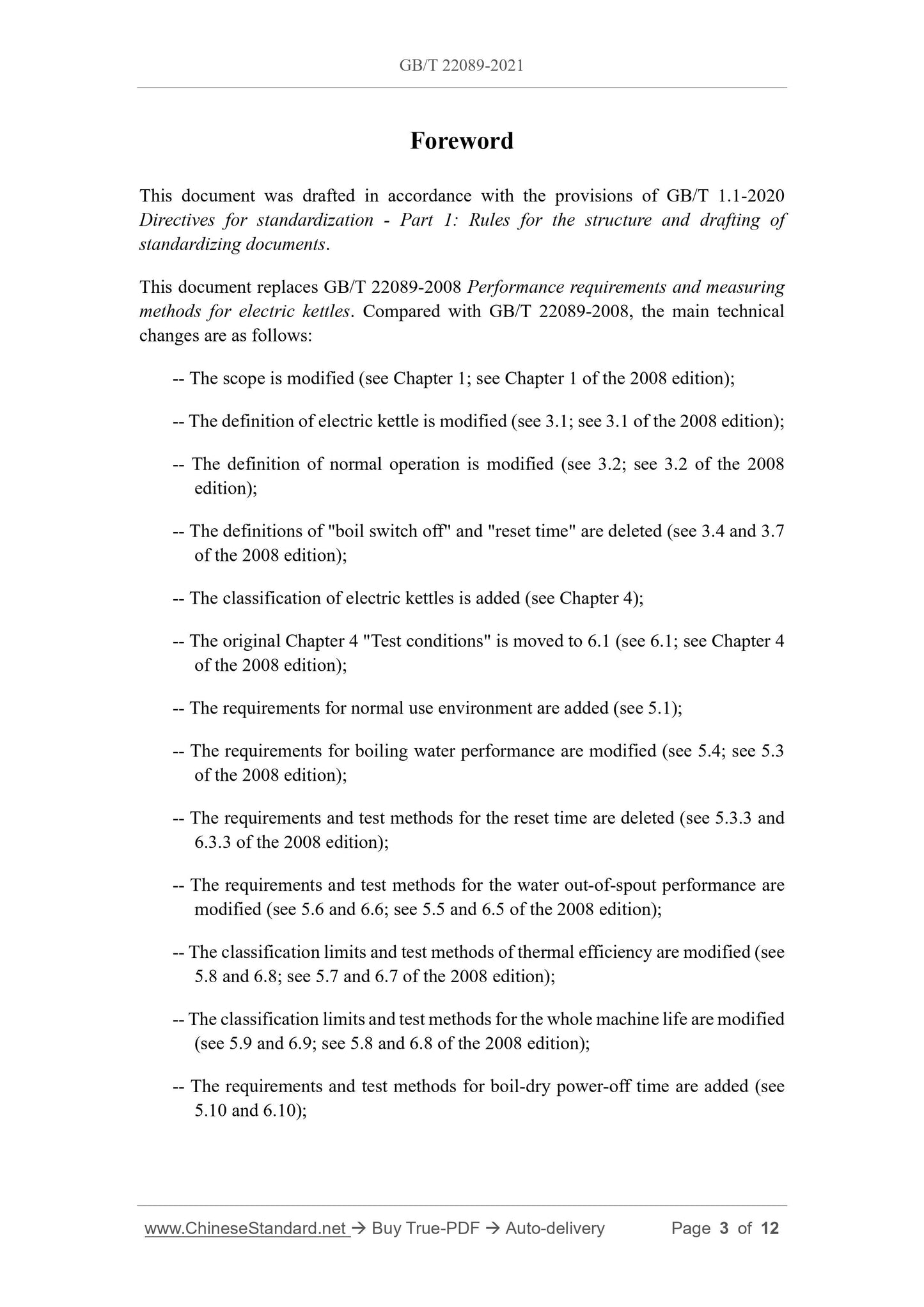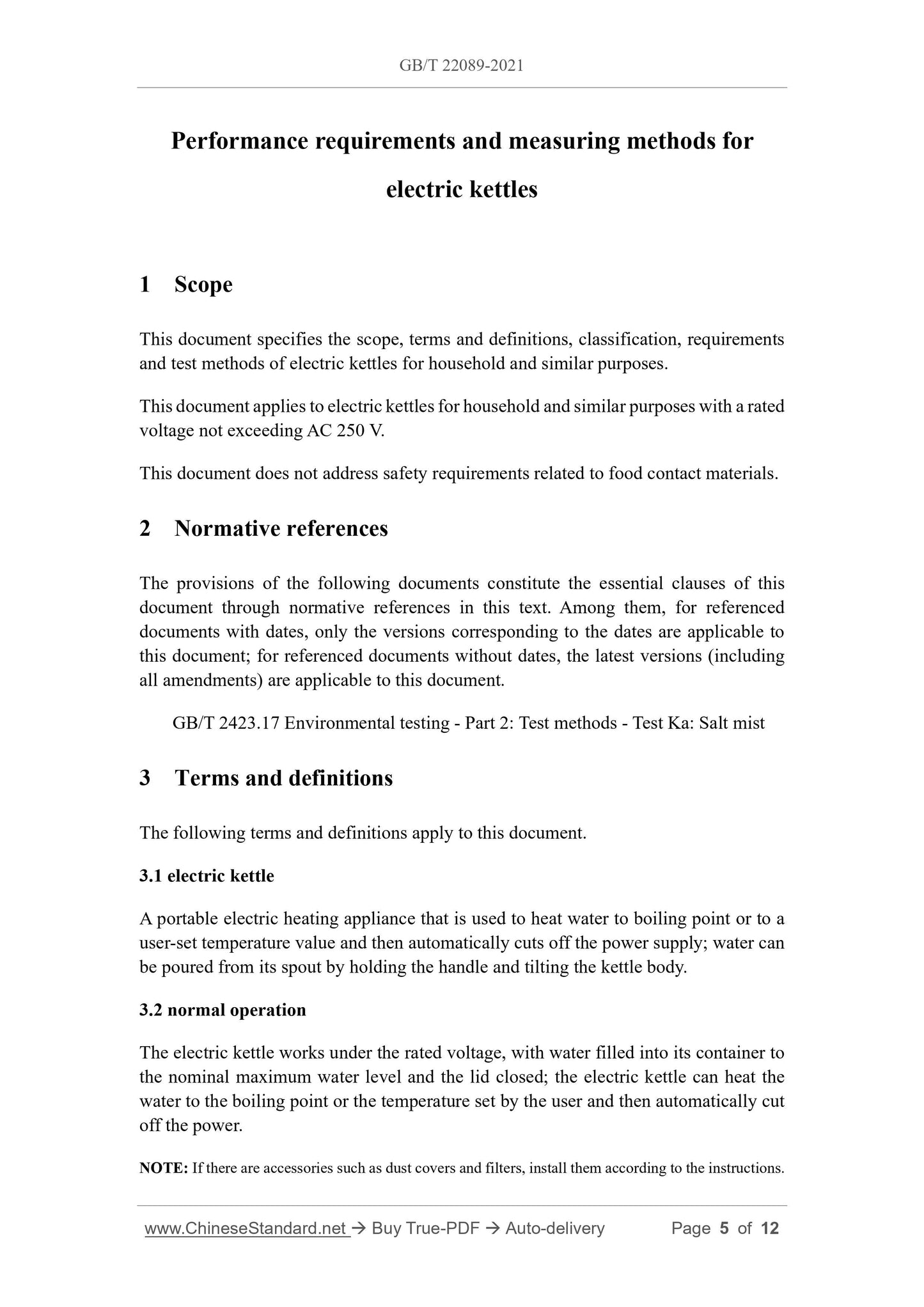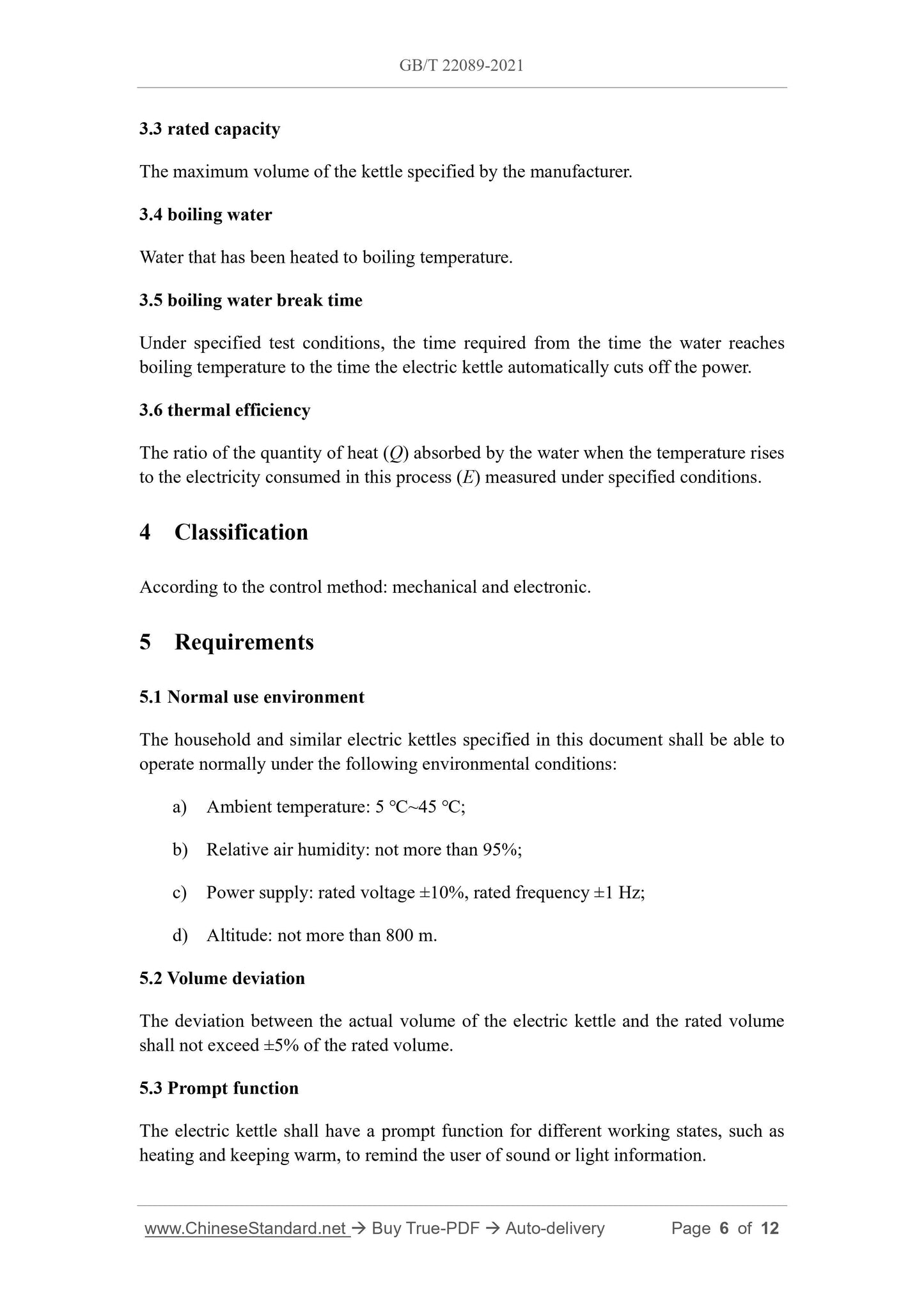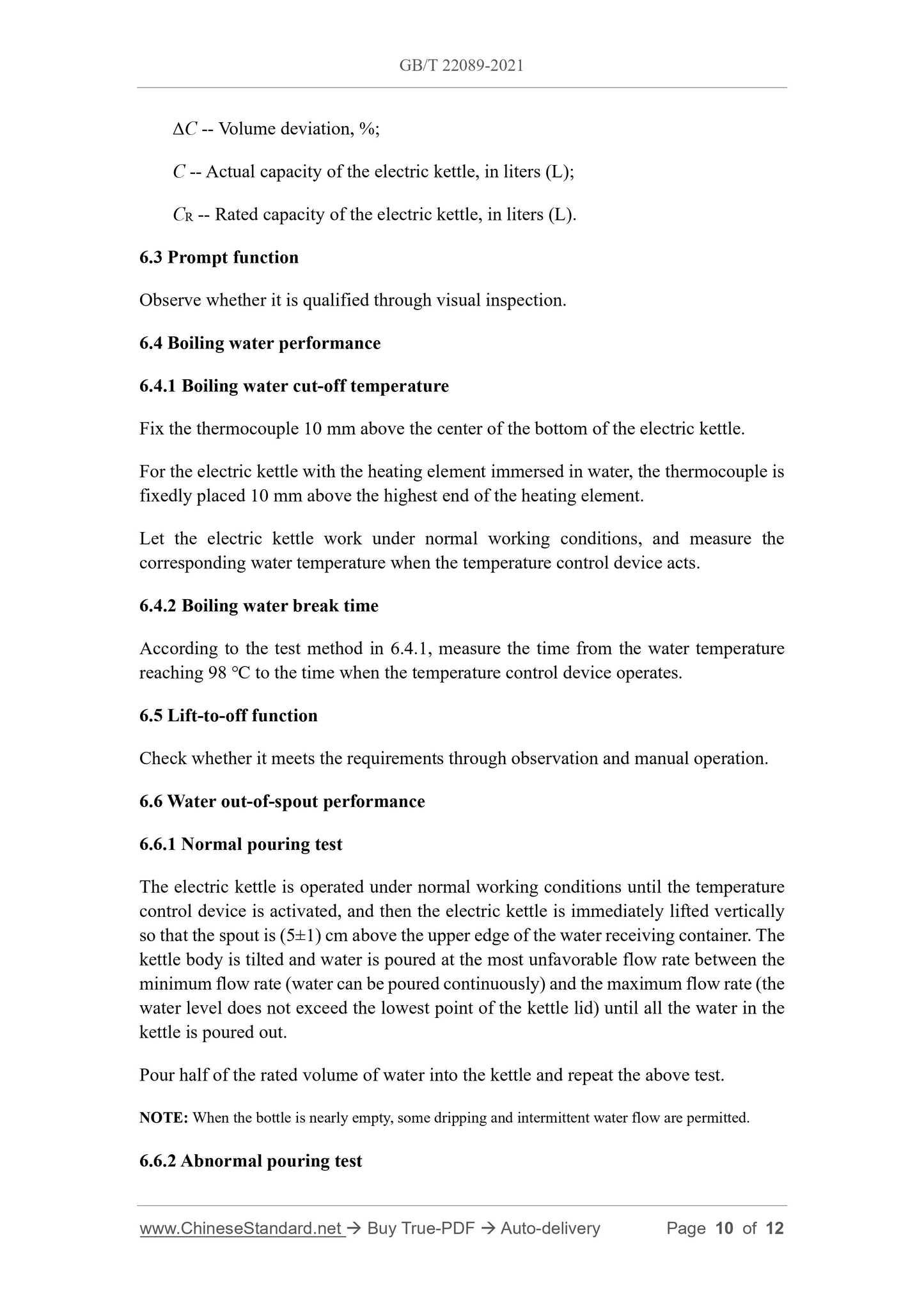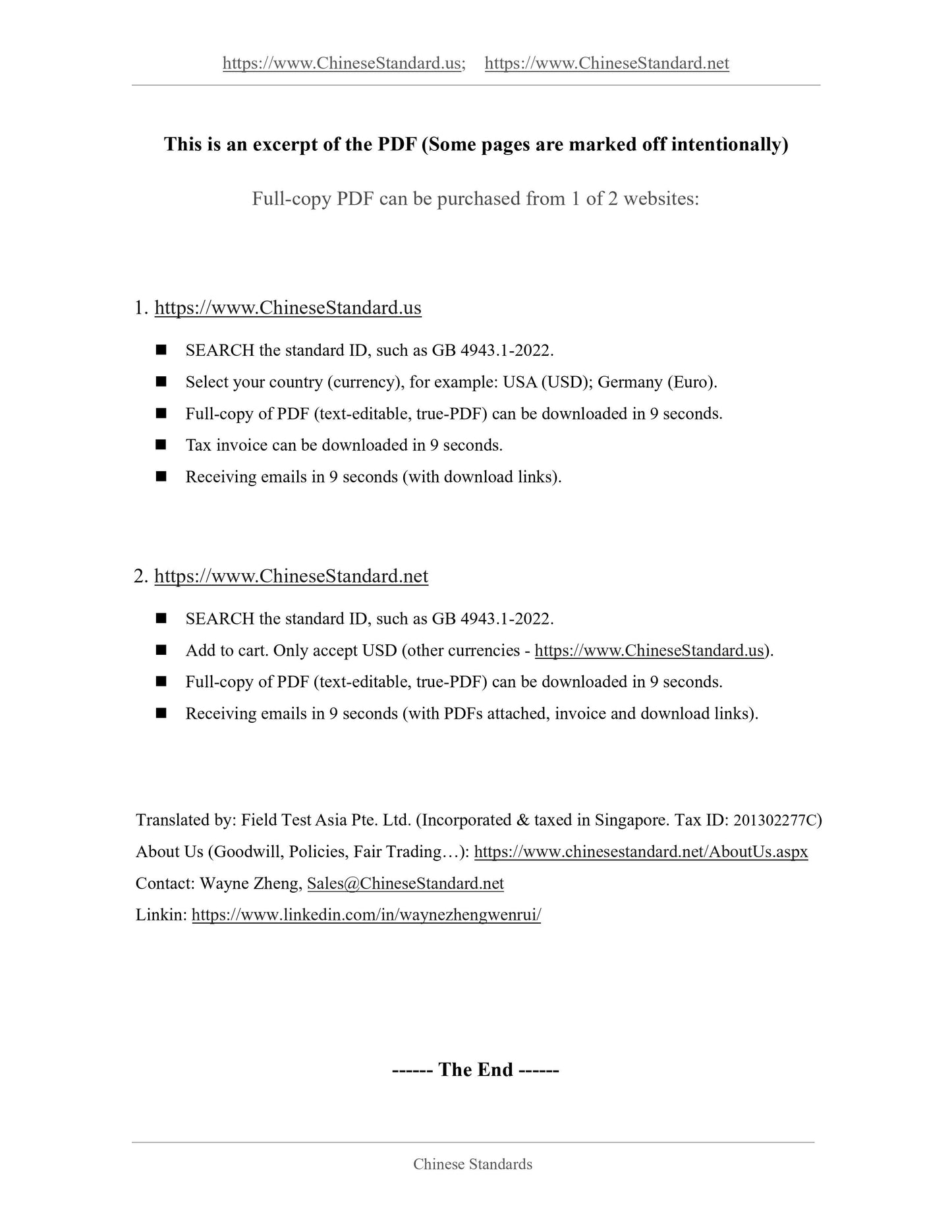1
/
of
7
www.ChineseStandard.us -- Field Test Asia Pte. Ltd.
GB/T 22089-2021 English PDF (GB/T22089-2021)
GB/T 22089-2021 English PDF (GB/T22089-2021)
Regular price
$170.00
Regular price
Sale price
$170.00
Unit price
/
per
Shipping calculated at checkout.
Couldn't load pickup availability
GB/T 22089-2021: Performance requirements and measuring methods for electric kettles
Delivery: 9 seconds. Download (and Email) true-PDF + Invoice.Get Quotation: Click GB/T 22089-2021 (Self-service in 1-minute)
Newer / historical versions: GB/T 22089-2021
Preview True-PDF
Scope
This document specifies the scope, terms and definitions, classification, requirementsand test methods of electric kettles for household and similar purposes.
This document applies to electric kettles for household and similar purposes with a rated
voltage not exceeding AC 250 V.
This document does not address safety requirements related to food contact materials.
Basic Data
| Standard ID | GB/T 22089-2021 (GB/T22089-2021) |
| Description (Translated English) | Performance requirements and measuring methods for electric kettles |
| Sector / Industry | National Standard (Recommended) |
| Classification of Chinese Standard | Y63 |
| Word Count Estimation | 10,166 |
| Issuing agency(ies) | State Administration for Market Regulation, China National Standardization Administration |
Share
